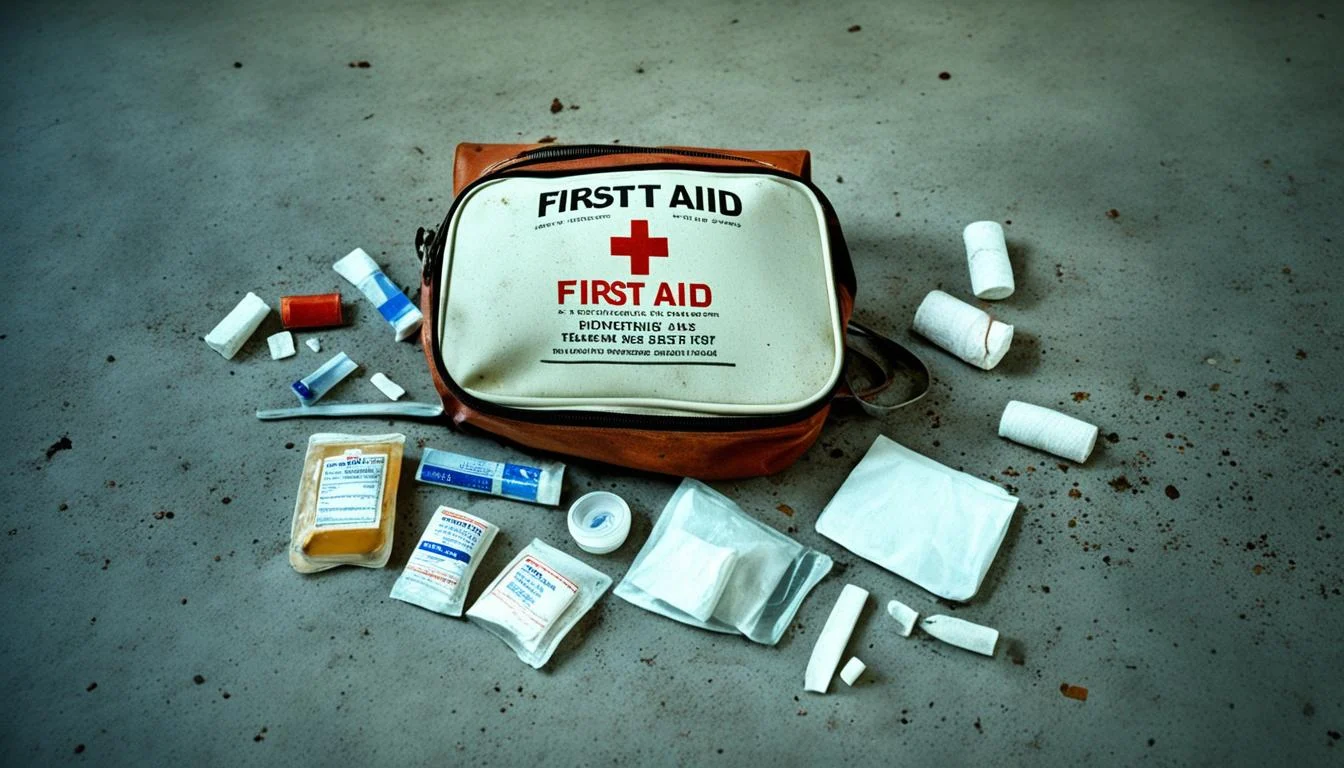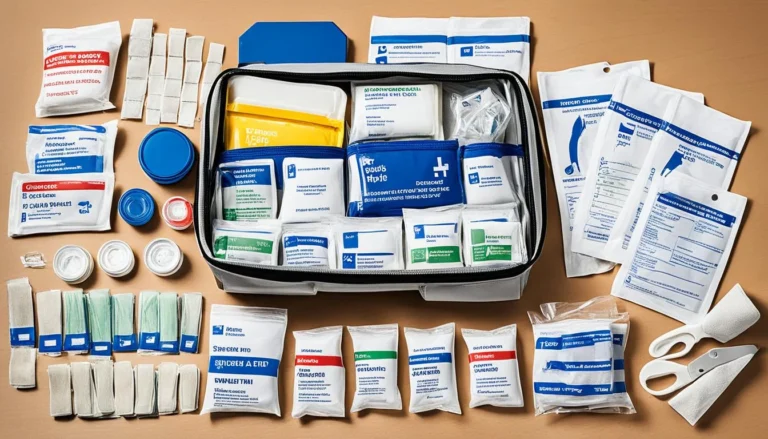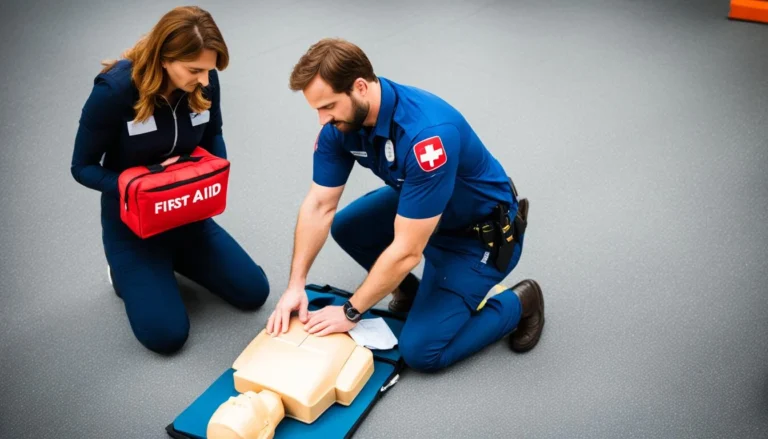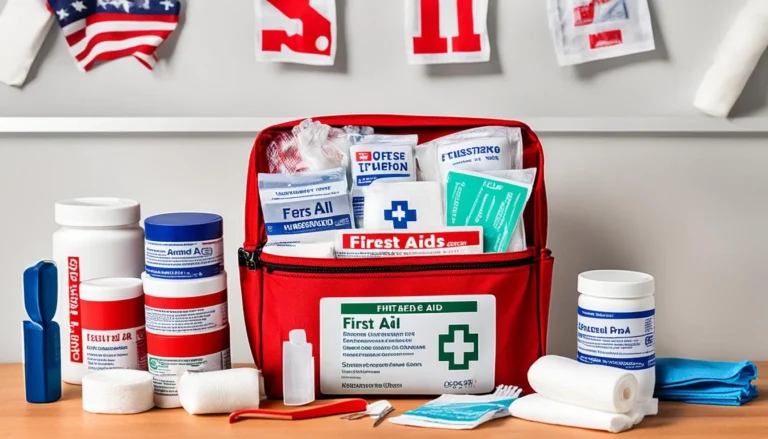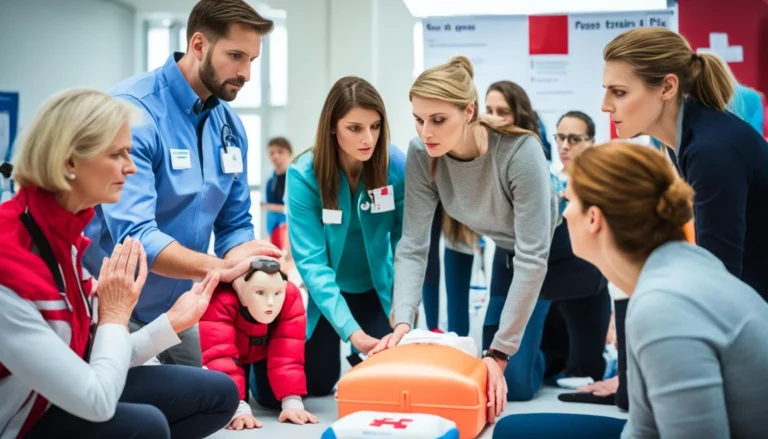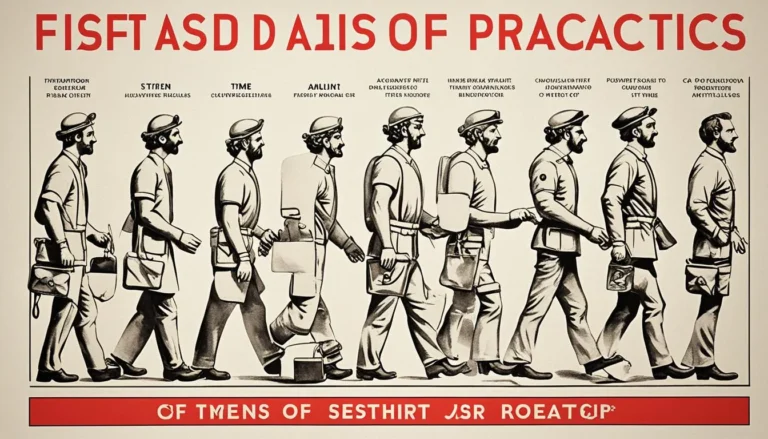Can You Use Out of Date First Aid Kit: A Comprehensive Guide
Toppling our not-to-do list is often checking first aid kits. But, avoiding this check can be risky in emergencies. An expired first aid kit brings up issues about first aid safety. It also decreases the effectiveness of items made to heal. The main problem isn’t just old medical supplies, it’s the danger they pose when trusted in need. So, it’s crucial to always check your kit. Make sure everything is in date and works properly. This keeps your kit’s effectiveness high.
Checking expiry dates is crucial to keep your first aid kit reliable. Will that antiseptic still work well? Can you trust the bandage to stay on and protect? These choices can help someone recover quickly or face more issues. A properly kept first aid kit is essential, not just suggested. It’s a key part of being prepared responsibly.
Key Takeaways
- Regularly inspect your first aid kit for expired first aid kit components to ensure safety.
- Understand the risks associated with using outdated medical supplies during emergencies.
- Recognise that updating a first aid kit is crucial for maintaining first aid safety.
- Appreciate the importance of kit effectiveness in emergency care.
- Take proactive steps in auditing and updating the contents of your first aid kit.
The Risks of Using Expired First Aid Supplies
When you see someone hurt, it’s crucial to have effective first aid products. But, if these items are old, they might not help, or even make things worse. This could be because the product has lost its sterile quality or might not work like it should anymore.
Sterility Concerns Over Time
Old first aid items can lose their sterility over time. Things that need to be clean, like gauze and needles, might not be. This can lead to infections or other health issues if used on wounds.
Decreased Efficacy of Medical Items
First aid items, like antiseptic wipes and ointments, lose their effectiveness over time. They could also become dangerous once they’re past their expiry date. This happens when the medicine breaks down and changes chemically.
Adhesive and Material Degradation
The stickiness and the strength of items’ materials can lessen. Things like bandages and wraps might not stick or hold as well as they should. This makes the wound more open to germs and dirt.
| First Aid Item | Impact of Expiry on Sterility | Impact on Efficacy | Impact on Material Integrity |
|---|---|---|---|
| Antiseptic Wipes | Reduced | Decreased potency | N/A |
| Bandages | N/A | N/A | Weakened adhesive |
| Elastic Wraps | N/A | N/A | Loss of elasticity |
| Sterile Gauze | Loss of sterility | N/A | N/A |
| Ointments | N/A | Reduced effectiveness | N/A |
It’s key to know the dangers of using old first aid products. This knowledge helps keep emergency care at its best.
Understanding Expiry Dates in First Aid Kits
Raising expiry date awareness is key in first aid kit maintenance. Expiry dates are crucial for safety and effectiveness. Factors like humidity, heat, and light can harm supplies. This makes following the dates very important.
To understand and manage better, follow these steps for good first aid kit care:
- Check expiry dates every six months. This makes sure everything is safe to use.
- Replace items about to expire to keep your kit reliable.
- Keep the kits cool, dry, and out of direct sunlight. This preserves their quality.
By keeping up with these steps, your first aid kit will be dependable when you need it.
What Items in Your First Aid Kit Can Expire?
It’s important to know which parts of a first aid kit can go bad. Items like sterile wraps, medicine, and sticky products have end dates. This keeps treatment safe and effective. Also, things like gloves wear out. So, check these items often to keep your kit up to date.
Sterile Items and Their Shelf Life
Bandages, sterile cloths, and wipes stop infections. They tend to last 3 to 5 years. Make sure these are still good by checking your kit now and then.
Medicines: Analysing Their Potency Post-Expiry
Medicines in the kit lose power over time. This includes antiseptics and painkillers. Change them when they’re past their use-by date. This makes sure your kit can handle health issues well.
Adhesive Products and Personal Protective Equipment
Bandages, tapes, gloves, and masks have expiration dates too. Over time, bandages and tapes might not stick well. And, protective gear might not protect if it’s too old. Regularly check if these items still work right.
| Item Type | Common Shelf Life | Signs of Expiry |
|---|---|---|
| Sterile Bandages/Dressings | 3-5 years | Package damage, discoloration |
| Medicines (Creams, Antiseptics) | 1-3 years | Separation, discolouration, ineffective |
| Adhesive Tapes/Bandages | 2-3 years | Loss of adhesiveness, visible wear and tear |
| Personal Protective Equipment | 3-5 years | Material tears, elasticity loss |
“Can You Use Out of Date First Aid Kit?” Exploring the Dilemma
When thinking about expired kit usage, it’s important to look at the risks. The use of old first aid supplies can be risky. We need to know what items are safe to use in a pinch.
Understanding emergency preparedness means knowing which items are still okay to use from an old kit.
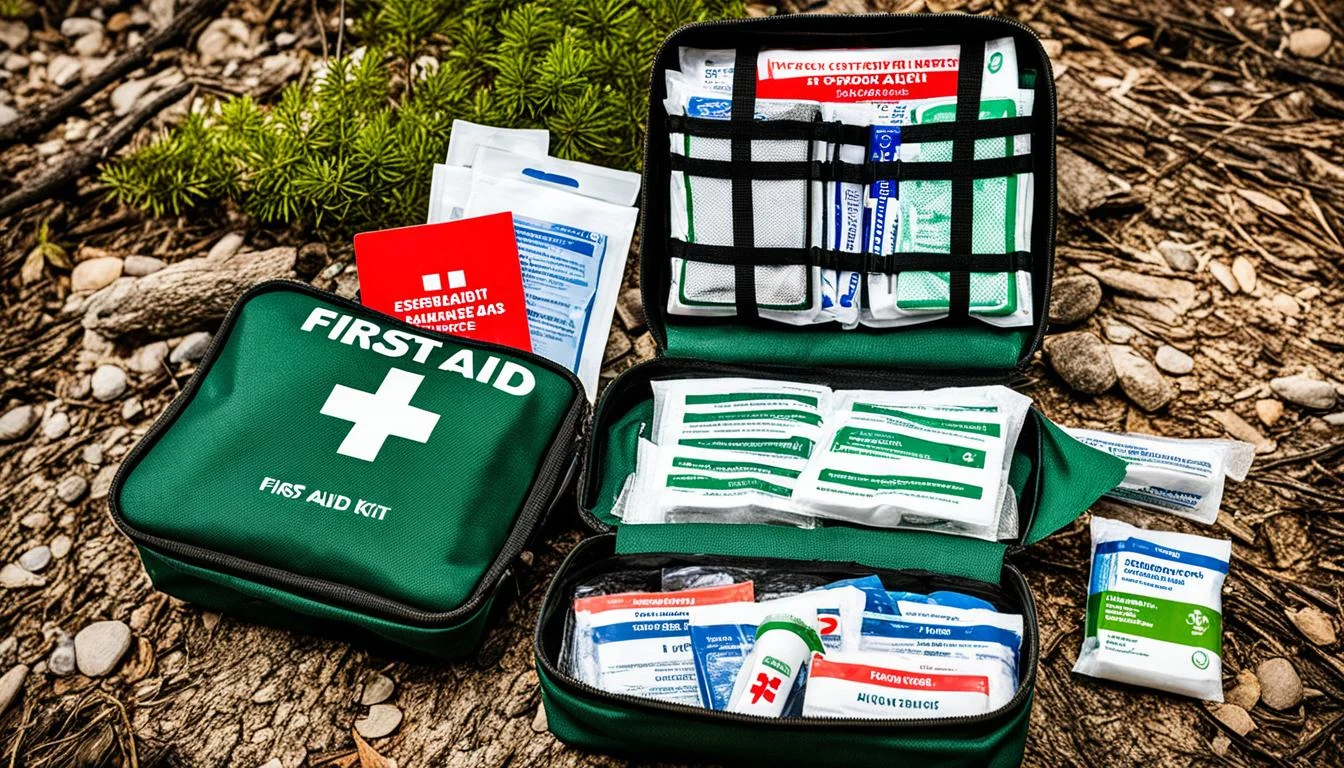
Some things in an old first aid kit are still safe. Let’s see how to manage this first aid dilemma:
- Essential non-sterile items like bandages and gauze, if kept in good condition, might be fine to use after their expiry date in an emergency.
- But using expired medicines is not safe. They might not work well or can be harmful because they are no longer as strong as they once were.
- It’s best to get rid of expired items and replace them with new ones before you need them.
In the end, we are warned not to use old medical supplies. But in some extreme cases, we might have to. This shows why we should always update our first aid kits. Doing this helps us be ready for emergencies with supplies that are still good.
Best Practices for Maintaining an Up-to-Date First Aid Kit
Keeping a reliable first aid kit is key for handling emergencies well. To keep it ready, do first aid kit updates and inventory checks often. Here are some top tips to make sure your kit is good to go at all times.
Regular Checks and Inventory Management
It’s vital to regularly look over your first aid kit. Perform inventory checks every few months. This ensures everything is ready to use and not expired. If something is out-of-date, replace it right away.
Replacement Strategies for Expired Supplies
Managing what to do when supplies expire is important. Replace items every three years, or sooner if they expire earlier. Keep a record to remember when to change them out. This will help keep your kit fresh and up-to-date.
| Item | Typical Shelf Life | Replacement Indicator |
|---|---|---|
| Adhesive Bandages | 2-3 years | Loss of adhesiveness or packaging damage |
| Sterile Gauze Pads | 3-5 years | Discolouration or compromised packaging |
| Antiseptic Wipes | 2-3 years | Drying out or leakage |
| Medical Gloves | 5 years | Elasticity loss or tears |
By doing regular first aid kit updates and replacing expired supplies, you maintain your kit’s usability and safety in emergencies.
Where to Find First Aid Kit Refills and Replacements
It’s essential to keep your first aid kit full of necessary items for quick response. You might need to replace used items or those that have gone out of date. Knowing where to get new medical supplies means you stay ready. We’ll show you where to buy top-notch first aid refills both online and from shops.
Online First Aid Suppliers
Shopping online makes getting first aid supplies easy and quick. You can find a wide variety of items from your computer or phone. Many sites have lots of details and reviews to help you pick the best product. Buying in bulk from trusted online stores can also save you money.
Local Pharmacies and Retail Stores
Local pharmacies and stores are great for instant needs and personal help. The people working there can give you advice and find the right products for you. They usually have many essential items on hand. This makes them perfect for getting what you need fast, especially for replacing old or used items in your kit.
| Supplier Type | Advantages | Product Range | Availability |
|---|---|---|---|
| Online Suppliers | Wide selection, convenience, cost-effective for bulk orders | Comprehensive, from bandages to specialised equipment | Generally high, with fast delivery options |
| Local Pharmacies | Immediate purchase, personal service | Focused on essential items | Depends on location, usually good in urban areas |
Whether buying from a local pharmacy or online, keeping your kit updated matters a lot. Use these smart medical supply sources so your kit is always prepped for a crisis.
Disposing of Outdated First Aid Materials
When it’s time to toss out expired first aid supplies, there’s a right way to do it. This means knowing when they’re no longer safe and what’s the best way to get rid of them safely.
Out-of-date medicines should go back to a pharmacy for safe disposal. This keeps them from being misused and causing harm to our planet. For the things that aren’t medicines, we still need to be careful with how we throw them away.
- Expired bandages, gauzes, and tapes should be disposed of in household waste unless contaminated, in which case, seek professional medical waste disposal services.
- Used or expired antiseptic wipes and creams should be sealed in a plastic bag before discarding to prevent leakage and contamination.
| Item | Description | Suggested Disposal Method |
|---|---|---|
| Expired Medicines | Includes all out-of-date medicinal items like pain relievers and ointments. | Return to pharmacy for safe disposal. |
| Used Bandages | Bandages that are soiled or expired. | Dispose of as medical waste if contaminated; otherwise, household rubbish. |
| Non-Medicated Items | Includes expired first aid tools like scissors and thermometers. | Check if recyclable; otherwise, dispose of in general waste. |
Following these steps for safe disposal helps us abide by the law. It also looks after our planet. Proper disposal prevents health dangers and protects wildlife from bad waste practices.
Eco-Friendly Approaches to Managing Expired First Aid Supplies
It’s vital to cut waste and back sustainability by handling expired first aid supplies the right way. This path backs our planet’s health and makes sure harmful items are thrown away correctly.
Recycling and Upcycling Options
Looking into first aid recycling offers a chance to get rid of items that are no longer helpful in a good way. Things like bandage wrappers and boxes, if not sterile, can become something new. Reusing them like this is a proper eco-friendly choice that cuts down on waste.
Donation Channels for Unexpired Supplies
Donating still-good items is a big part of being eco-conscious with first aid supplies. Places like vet clinics and first aid training schools can really use them. These gifts help medical resources last longer and make local areas and emergency readiness stronger.

So, using these green plans helps everyone. It keeps our world healthy for the future. Plus, it means first aid gear is used in the best way, helping both people and the planet.
Are Expired First Aid Supplies Ever Safe to Use?
When we urgently need medical help, checking if expired supplies are safe matters a lot. This is especially true when we don’t have other options. Using outdated supplies in an emergency is sometimes necessary, but it’s not perfect.
Scenarios Where Limited Use Might Be Permissible
Some expired first aid items can work in very urgent situations. A bandage that’s past its use-by date but unopened and clean might be okay. This is only when there’s nothing else available.
Analysing Risks versus Benefits in Emergency Situations
Using old supplies in a crisis can be a short-term fix. But, it’s vital to know the risks involved. We have to weigh the dangers against helping the patient, always choosing what keeps them safest.
Considering whether to use expired supplies includes looking at infection risks and if they’ll still work. It’s about making a smart choice, focusing on not putting safety at risk.
There are times when old first aid supplies are our only choice. But, we have to be very cautious because there are risks. Updating our first aid kits regularly is key, ensuring we’re always ready for an emergency.
Conclusion
In short, keeping first aid kits safe is crucial. It starts with proper care and regular checks of these life-saving tools. Make sure to look through them often and replace anything that’s past its date. This way, you’re ready for anything.
Using old medical supplies can be very risky. That’s why staying prepared means more than just updating your kit. It’s also about knowing how to get rid of old items safely and in a way that’s good for the planet. This careful approach helps us all be ready and do our bit for the earth.
So, looking after your first aid kit well is an ongoing promise to safety. It relies on keeping track of what’s inside and knowing when things expire. Also, don’t forget the green way to toss out old items. Balancing care for our kits and the environment is key. Paying close attention to every detail ensures our kits will truly help us when we most need them.

